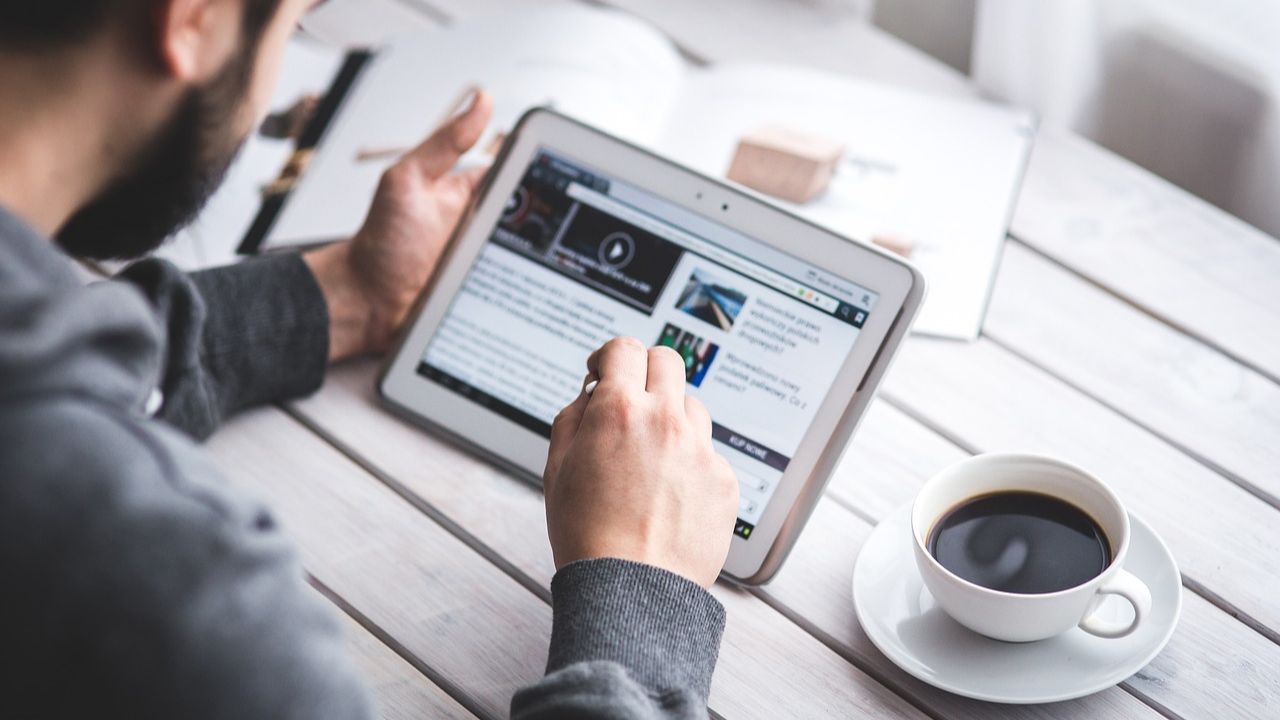Do you have an idea that feels like “the next big thing?” Or maybe you’d like to build on an existing idea to tweak or enhance it. When it comes to the product development process, there are plenty of use cases where it can be applied. And for the entrepreneurs and businesses that apply it well, the outcomes can be incredible.
But there’s a big obstacle: For many, the product development cycle can be wildly intimidating and even mysterious. It can be hard to know what applies where and which steps to take at the right time.
In this article, we’ll go over the basics of the process, some examples, and six key steps to product development, including:
- Idea generation
- Product and market research
- Product and business planning
- Prototyping
- Sourcing and manufacturing
- Product launch
What is product development?
Product development refers to the overall process of taking a product from concept to market. This includes conceptualizing the item, identifying customer needs, collecting feedback, building the product roadmap, and launching the item. For some companies, product development covers revamping an existing product and introducing an old product in a new market.
In any company, no one role is responsible for product development. Whether you are an established corporation or an early stage startup, product development will span every department, including engineering, manufacturing, UI/UX, product marketing, and more. Each unit plays a key role in building, defining, managing, testing, and releasing the product.
→ Click Here to Launch Your Online Business with Shopify
What is new product development (NPD)?
New product development is an essential aspect of product design. Until the product’s life cycle comes to an end, you can continue to iterate on new versions of the product by adding new features or enhancing existing ones. Plus, stakeholders can continue to collect user feedback to help improve future products. With evolving customer preferences, the product design process makes new product development all the more important.
What is a product development plan?
A product development plan (a.k.a. product development strategy) guides a business through creating a product. This detailed plan includes milestones and checkpoints to keep a multi-disciplinary team aligned and on track toward launching the product.
Before beginning any stage of product development, document your plan. Consider the necessary duration, establish deadlines, schedule meetings, and define goals.
Reasons to create a product development plan
A product development plan is an important element of the product creation process. Here’s why:
- It promotes creativity. The plan sets clear boundaries, so teams do not need constant supervision. This freedom allows them to innovate.
- It defines success. The plan specifies what successful outcomes look like and how to measure them.
- It reduces risks. The plan includes thorough research on competitors, markets, and target audiences, ensuring comprehensive preparation.
- It establishes checkpoints. The plan schedules regular meetings and sets goals for each stage, helping teams stay focused and aligned.
- It unites the team. By starting with a shared understanding, team members work independently and effectively toward the final product.
The product development process in 6 steps
Every product roadmap will be different, but there are six key steps that every product development team should run through to ensure they’re covering the bases. Let’s go over each one.
1. Idea generation
Many aspiring entrepreneurs get stuck on the very first step. They think that they need to be inspired by a massive aha moment—something that’s never been done before. But the truth is, innovation can happen in small ways.
Remember the acronym SCAMPER as you think of all the ways you can approach product concept development:
- Substitute: replacing one material or element for another
- Combine: putting two pre-existing products or processes together
- Adapt: changing one aspect of an existing product or process
- Modify: changing the design or functionality of an existing product or process
- Put to another use: finding new ways to implement existing products or processes
- Eliminate: getting rid of one element or step in an existing product or process
- Reverse/rearrange: changing up the outcomes of an existing product or process
With the help of these prompts, you can find new ways to change existing ideas or tailor them for a different audience. Insights from business analysis can also help you identify the opportunities available in the marketplace.
2. Product and market research
Research is an absolutely critical part of the product development process. Without it, you might find later down the road that you’ve made some critical mistakes. Or worse: Without market research, you might find that you’ve spent tons of time and resources developing a product that your target market doesn’t actually want to buy!
You’ll need to gather significant product validation before you move forward with building your final product. But you can’t just ask a few people if they like the idea. You’ll need to do some deeper digging, like:
- Creating surveys to gather opinions and suggestions
- Engaging other experts and potential end users through online forums
- Using market research tools like Google Trends and the Pew Research Center
- Test marketing, which is testing your idea on a small group of people
- Creating a crowdfunding campaign to see how the market reacts to your idea
Validation research also includes analyzing competitors. If your product or niche could capture market share, competitors are likely already present.
Studying competitors helps you understand their customer attraction and sales tactics. Ask your potential customers what they like or dislike about your competitors to identify your competitive advantage.
Compiling information from product validation and market research will help you assess the demand for your product and the level of competition before you begin planning.
3. Product and business planning
Once you’ve successfully validated your idea, it’s time to plan. For product planning purposes, you’ll want to create detailed product sketches and 3D models that will help you when it’s time to start prototyping and building. The more detailed your blueprints, the easier it will be for you to bring your idea to life.

Your plan should address the following questions to guide pricing, brand positioning, costs, and marketing strategy:
- The specific materials you’ll want to build your product from
- How you’ll want your packaging and labeling to look
- Costing, or calculating how much each unit will cost to produce (like COGS, or cost of goods sold), then figuring out how much you need to price the item at to ensure you’re making a profit
- Whether the product will serve everyday needs or special occasions
- Whether it will be marketed as a luxury item or be accessible to a wider audience
- General business planning, like how you plan to run the business and stay afloat in the long term
4. Prototyping
Now it’s time to bring your masterpiece to life. During the prototyping process, you’ll create a final product that will be your model for mass manufacturing.
Depending on the type of product you’re prototyping, it’s likely that you won’t get it right on your first try. It’s common to create multiple versions of your product, then narrow it down to your favorite once you’ve had a chance to actually feel it and test it in the real world.
Your goal is to come up with a minimum viable product (MVP), or a product that gets the basic job done sufficiently, but doesn’t necessarily have all the bells and whistles you’d like to add in the long run.

In some cases, you’ll be able to prototype yourself, like if you’re a clothing designer making your own items. But if you’re developing items like electronics, toys, or accessories, you’ll likely need to start by sourcing a partner or manufacturer to help.
5. Sourcing and manufacturing
Once you’re satisfied with your product prototype, the next step is gathering the materials and finding manufacturing partners. Your product supply chain will be powered by vendors, resources, and activities needed to make the product and get it to your audience. Project management becomes crucial during this stage of product development.
When searching for producers, take advantage of both in-person and online resources. You can attend trade shows dedicated to sourcing, for instance. Trade shows like Magic offer the opportunity to meet hundreds of suppliers at once to see and discuss materials. Face-to-face interaction with vendors can be valuable when it comes time to negotiate.
You can also go through Alibaba, the most popular sourcing platform for manufacturers. You can browse the Alibaba marketplace listings for raw materials or finished products. One tip is to search for listings of products similar to your own and then contact the factory to ask if they can make your preferred design.
6. Product launch and commercialization
The time has come! The world deserves to meet your product. In this step, you’ll release your product into the world and listen closely to the initial customer feedback.
Here are some ways to generate attention and get sales in the early stages of your product launch:
- Create a beautiful, eye-catching website that explains your product well and gives users an opportunity to buy smoothly and easily.
- Host a pre-launch giveaway or contest to generate an email list, then use email marketing to nurture those contacts indefinitely.
- Find the right marketing and distribution channels to make sure the right people are seeing your product.
- Develop a social media marketing strategy to build engagement on platforms like Facebook, Instagram, TikTok, and SnapChat.
- Work with relevant players in your industry, like partnering with influencers and other brands.
- Attend industry events, conferences, and networking opportunities to build relationships and get the word out.

Product development examples
Food and beverage
One of the easiest products to start developing is food and beverage items. You can manage their development from the comfort of your own home, and at a low cost. It’s as simple as buying ingredients for specific food and tweaking the recipe in your kitchen.
But to transition from recipe to packaged food you can sell online and in stores, you will need to find a commercial kitchen licensed to produce food. A co-manufacturer might be an even better option if you’re considering mass production.
With food product development, you’ll also need to consider the following:
- Expiry dates. You will need to consider your product’s lifetime and how you will package and stock the item to accommodate this.
- Labels and warnings. Many countries have laws around allergen warnings, dietary labels, and health claims you must comply with.
Cosmetics and beauty
Self-care and wellness trends have created a thriving market for a range of cosmetics and beauty products. From skin care to bath products to makeup, many brands are focusing on organic ingredients, making it easier to prototype a product using everyday materials.
You can also look into white labeling, where you find an existing manufacturer and then package and brand the products they produce. Note that cosmetic manufacturing requires working with a chemist and lab to ensure the quality remains consistent at scale.
Other factors to consider:
- Shelf life. Test products and add necessary expiry labels to them.
- Regulations. See what FDA regulations apply to your product and packaging. Then ensure your product design complies with them. Most countries require cosmetics manufacturers to warn about any potential reactions of their products.
Pave your own product development roadmap
No two product roadmaps will look the same, but the product development process should always be covering the same types of bases. Follow this six-step guide, from idea generation to planning to launch, and you’ll be on the right path. As you get more familiar with your industry, the pieces of your unique product development cycle will continue to unfold.
The main things to keep in mind are to be diligent, well-researched, and well-prepared as you enter into the process. Make sure you’re keeping an open mind and ready to pivot whenever new information suggests that it’s needed.
Product development FAQ
What is the difference between product development and product management?
Product development refers to the ideation and creation of a new item. It incorporates a specific product strategy into the product lifecycle to turn a concept into reality. Product management involves guiding all teams toward building a usable product people will buy. The two departments work together to develop the product roadmap to bring the item to market.
What is the difference between product development and software development?
Software development is a specific part of the broader product development process. It focuses only on creating and maintaining software solutions. In contrast, product development includes the entire lifecycle from concept and design to manufacturing, marketing, and support. Specific methodologies such as DevOps, Agile, and rapid application development (RAD) guide the workflow in software development.
How can I come up with product ideas?
- Online consumer trend publications
- B2B wholesale marketplaces
- Brainstorming
- Social media
- Examining competitors














Leave a Reply